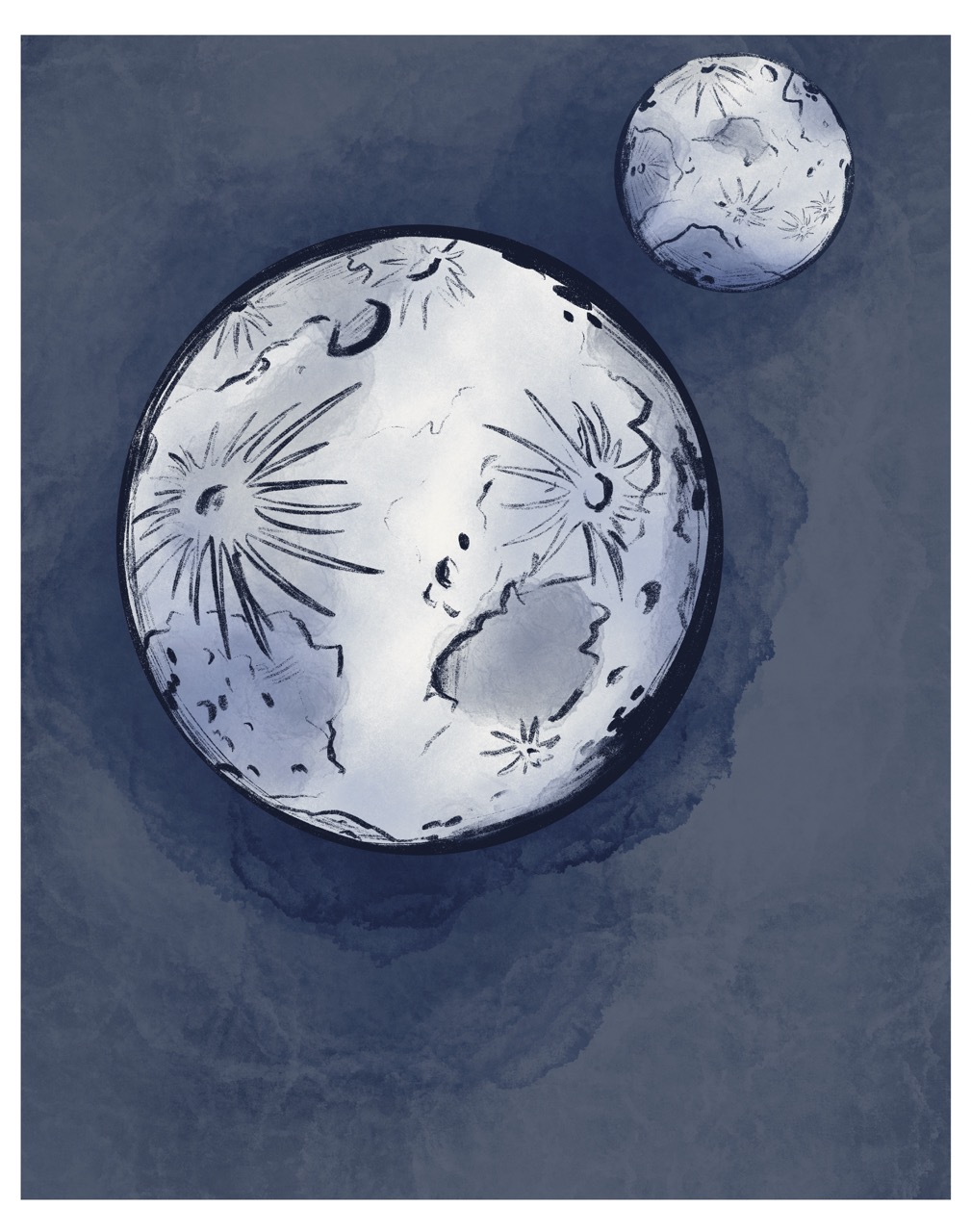As Earth continues its timeless journey around the Sun, it is not alone in its celestial voyage. Our faithful Moon has always given us company. In an exciting new development, scientists have detected a temporary “second moon” orbiting Earth—an asteroid named 2024 PT5, whose capture by Earth’s gravity is both a rare event and a monumental step in technological advancement.
This mini-moon, although small and fleeting, presents a unique opportunity for astronomers and space enthusiasts alike to marvel at the ever evolving mysteries of our solar system.
The asteroid, designated 2024 PT5, was first detected on Aug. 7 by the NASA-supported Asteroid Terrestrial-impact Last Alert System (ATLAS) at Haleakala Observatory in Maui, Hawaii. This discovery has sparked excitement in the astronomical community and provides a perfect moment for us to explore the fascinating world of near-Earth objects and the technology we use to study them.
When asked about what makes 2024 PT5 unique, PSU Alumnus, Planetarium Director and Astronomy Instructor at Mt. Hood Community College William Blackmore explained.
“I think all of the mini moons themselves are distinctly unique,” Blackmore said. “And so nothing sets this one apart from the others apart from then it’s the most recent, it’s going to be here for at least a few weeks, probably until mid November. It’s supposed to be around for about 56, 57 days or so.”
This temporary capture of an asteroid is not an entirely new phenomenon, but each occurrence provides valuable data for astronomers. The Director of Space Science Education at the Oregon Museum of Science and Industry (OMSI) and PSU Alumnus Jim Todd elaborated on this point.
“This is really a true measurement where we are with technology,” Todd said. “It probably is not the first time that we have had what’s called the mini moon. It’s, unfortunately, a catchphrase right now. It’s being used on the internet. But it probably has happened more times, more often than you think.”
The significance of this event lies not just in the asteroid itself, but in our ability to detect and study such small objects at vast distances.
“But the odd thing is, it’s only 33 feet wide,” Todd said. “Five times more the distance between the earth and the moon. So that’s quite a distance away for a tiny little object.”
The mechanics of how 2024 PT5 becomes Earth’s temporary moon are fascinating.
“It is that this thing’s moving along with us in the orbit of the sun,” Blackmore explained. “When I say with us, I mean, obviously more intimately with us in the next couple months. But it and other objects within the Arjuna asteroid belt around the sun are all moving at about the same pace.”
“You can imagine it like a skateboarder dropping it down into a skating rink and they are adding the energy by kicking along as they go, but they are riding those curves and that is like the comet getting captured in the earth’s gravitational field riding the curve,” said Blackmore.
Todd provided additional context on the rarity and mechanics of such events.
“The chances of any asteroid becoming a moon is very small,” Todd said. “Most asteroids have one or two things that will happen. It will get close to the Earth, but it won’t get captured or it will get too close to the Earth and will fall into the Earth’s atmosphere and create a fireball like we had over Oregon.”
For those hoping to catch a glimpse of our temporary cosmic companion, both experts cautioned that it would be extremely challenging, if not impossible, for amateur astronomers.
“I think it is estimated that you would need a telescope with a minimum diameter of about 30 inches in order to see it right. That’s beyond amateur level.”
“Well, if you want to see it, it will absolutely not be visible to the naked human eye,” said Todd. “Being 33 feet wide, five times the distance between the Earth and the Moon you have to have a very large telescope.”
While 2024 PT5 may not pose any threat to Earth, its study is crucial for advancing our understanding of near Earth objects and refining our detection and tracking capabilities.
“I think the most important is in terms of having a detailed analysis of the way it moves, the way it interacts with the Earth’s orbit, gravitational pull within our orbit and then taking off,” Blackmore explained.
“You know, we’re dealing with systems and models where we’re tracking objects that are literal feet across to even larger, that are millions of miles away and also those which aren’t in our orbit all the time,” Blackmore said. “They travel relatively fast and so getting an opportunity to refine our techniques when things do get closer to us is only going to be more valuable for learning more about these objects and tracking them, if we’re ever worried about them crossing our paths again.”
“We need to build an understanding on how we can intercept an asteroid at a distance,” Todd said. “And be able to deter it in a different direction.”
The capture of 2024 PT5 opens up exciting possibilities for future space exploration and asteroid studies.
“What I think would be really fascinating is if we had missions prepped, or we’re ready to go perhaps with a Satcube kind of technology, which are small, tiny objects which can be sent with huge payloads,” Blackmore said. “If we had something prepped to get out to one of these objects when we knew it was coming.”
He elaborated on this concept, envisioning a network of small probes attached to various near Earth objects.
“How fascinating would that be if we had a series of networks that we slowly start building out there, not only to investigate even just to the smallest technology level, having cameras and other sensors as well out there that’s kind of traveling along with us, or if we build up this network of space webcams that we could log into,” Blackmore said.
Todd highlighted the potential for asteroid mining and scientific discovery.
“There may be some medical value on it, that we find elements which we just can’t find here on earth,” Todd said. “That could really solve a lot of problems in the future. But that debate will go on. Is there any value to it? Well, yes and no. But in my own opinion, I think that we should understand more about the asteroids, how they travel, their density, what they’re made up of, to prevent any impact here on Earth.”
As we contemplate the brief visit of 2024 PT5, it’s worth reflecting on our place in the cosmos. This small asteroid, temporarily caught in Earth’s gravitational embrace, serves as a reminder of the dynamic nature of our solar system.
For students and professors alike, the study of near Earth objects like 2024 PT5 offers a unique opportunity to engage with cutting-edge science and technology. It challenges us to think beyond our planet and consider the vast possibilities that lie in space exploration and planetary defense.
As we continue to refine our ability to detect, track and study these cosmic visitors, we not only enhance our understanding of the universe but also take crucial steps in protecting our planet from potential future impacts. The story of 2024 PT5 is more than just a fleeting astronomical curiosity. It’s a testament to human ingenuity and our enduring quest to unravel the mysteries of the cosmos.
In the words of Carl Sagan, “The cosmos is within us. We are made of star stuff. We are a way for the universe to know itself.”
As 2024 PT5 makes its brief sojourn in Earth’s orbit, it serves as a reminder of our connection to the vast expanse of space and our responsibility to continue exploring, learning and protecting our celestial home.






